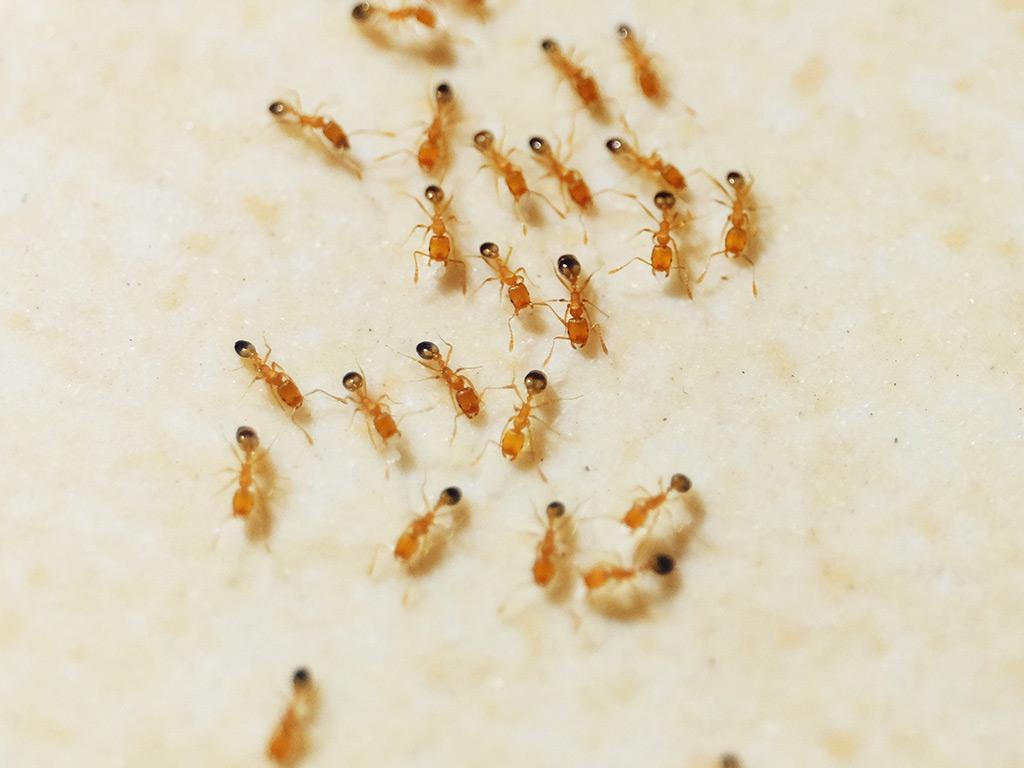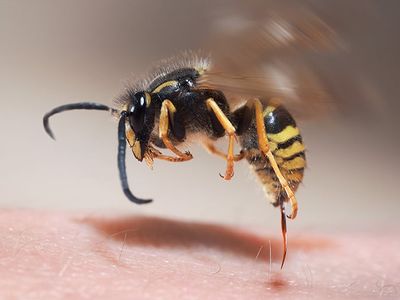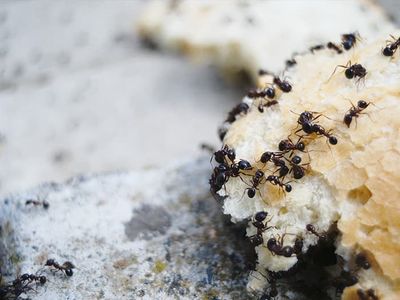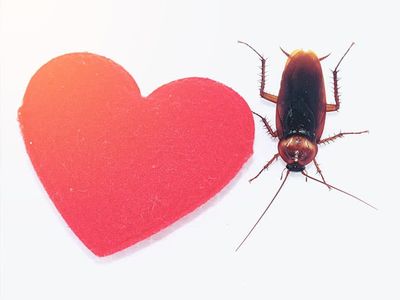What do Pharaoh ants look like?
Pharaoh ants range from yellow to light brown, are approximately 1/16 inch long, and have a three-segmented club at the end of their antennae.

When are pharaoh ants most active?
Biology of Pharaoh ants
Pharaoh ants do not swarm. Females mate in nests and new colonies are formed by budding. This means part of the main colony moves to a new location.
There may be hundreds of thousands of ants in a colony. The queens are about twice the size of the workers and are a dark brown color.
There are multiple queens in the colony all laying eggs at the same time. A female produces 350 to 400 eggs in her lifetime.
The entire life cycle is completed in 38 to 48 days at room temp. Indoors, these ants develop year-round.
Where do Pharaoh ants nest?
Outdoors Pharaoh ants are usually found in shaded areas or under debris.
Indoors, ants nest in warm, humid areas that are close to food and water sources. Typically, nests are established in areas that are inaccessible to humans and include walls voids, behind baseboards, and under floors.
What do Pharaoh ants eat?
Pharaoh ants are omnivorous and love sweets. They will also consume protein, grease, and small insects.
Are Pharaoh ants dangerous?
Pharaoh ants do not bite or sting but they are known to spread more than a dozen disease pathogens including salmonella and Streptococcus pyogenes. Most notably, they cause serious problems in hospital settings when they infest patient wounds and enter intravenous bottles.
How did I get Pharaoh ants?
Pharaoh ants enter homes and structures through cracks, gaps, or openings on the exterior. Once they find a good food source, they’ll return to their nest but leave a pheromone trail on the surface for other ants to use.
How do you get rid of Pharaoh ants?
In order to eliminate Pharaoh ant activity, contact Greenway Pest Solutions. Our local pest control specialists are highly trained and ready to develop a Pharaoh ant treatment plan specifically for your property.









